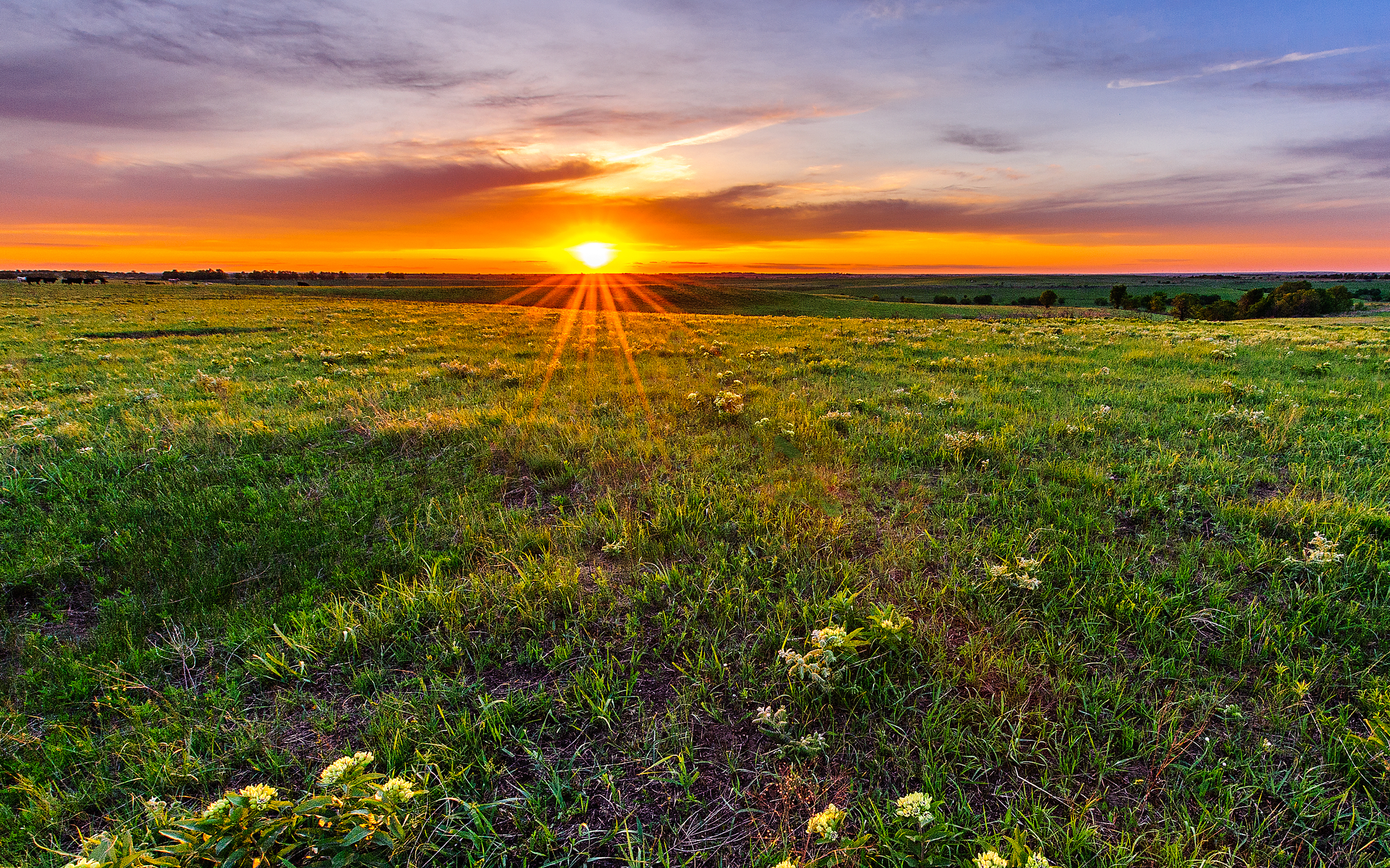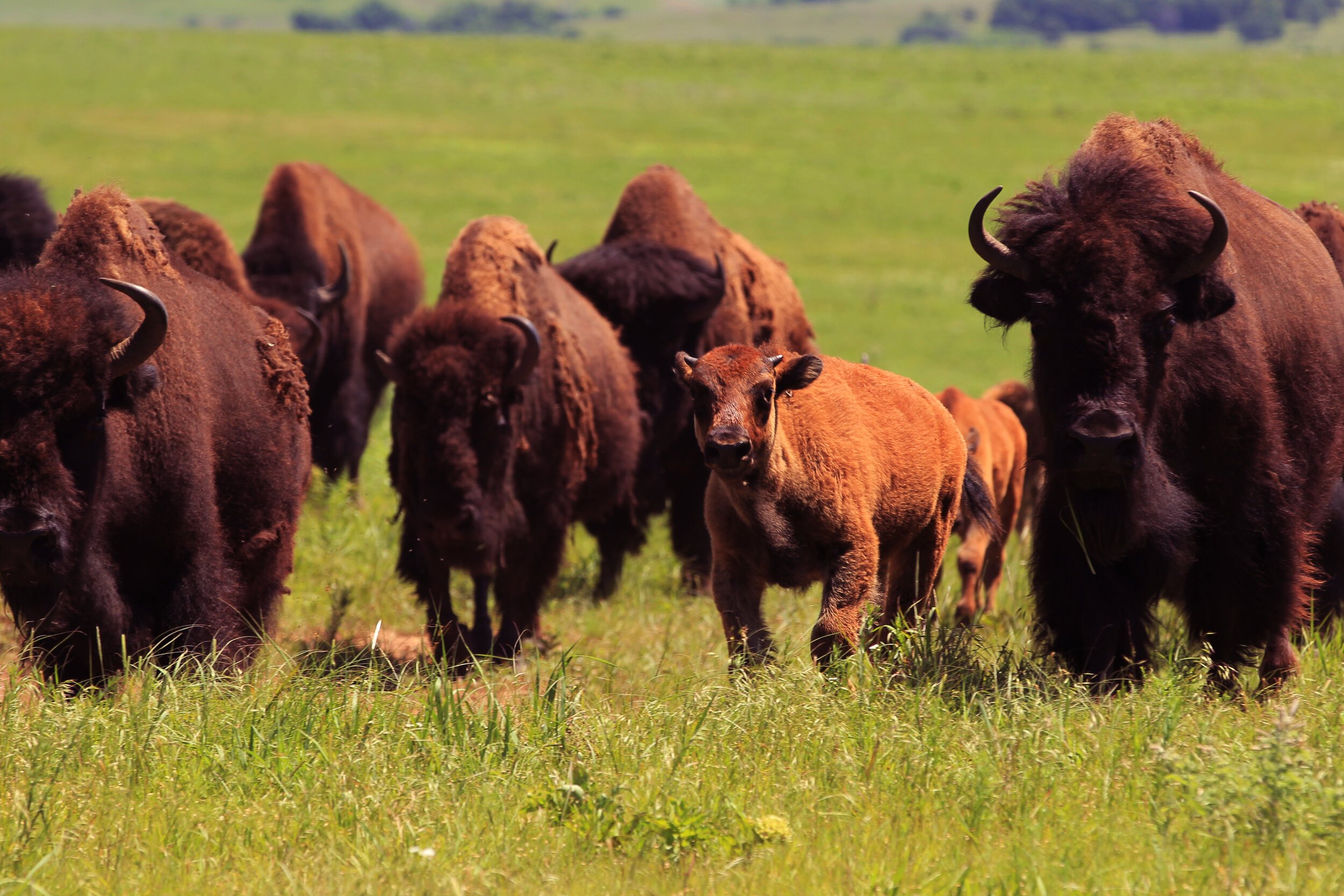
Red Buffalo Ranch
Father and Daughter Maintain a Working Ranch and Conservation Legacy at Red Buffalo Ranch
Bill Kurtis, owner of the Red Buffalo Ranch in Chautauqua County, has seen a lot of different terrain during his career as a news anchor and documentary producer. For him, nothing tops a tallgrass prairie.
“I was able to see the great grasslands of the world, the mountains, and the beaches,” Bill said. “And the more I went back home, the more I realized that I am a flatlander and a tallgrass prairie person.”
Originally from from Independence, Kansas, Bill bought Red Buffalo Ranch in the late 90s, and permanently protected 4,700-acre of the ranch through the Kansas Land Trust in 2013. Located in the southeastern part of the state near Sedan, Red Buffalo is a working ranch that is home to a bison herd of 60. Parts of the land are also leased for cattle grazing during the summer months.
In addition to being a working ranch, Red Buffalo is diverse piece of land that includes scenic vistas of native tallgrass prairie dotted with ponds, creeks and patches of woodlands. Bill said that it is not uncommon to find artifacts from both indigenous tribes and homesteaders when exploring the property.
“My favorite is to go up there and just let the wind in my face and look at the grand horizon…there is a magic there,” Bill said. “It’s a place for dreaming. Your dreams can be touched off by the clouds that have those great white shapes, and you just think back to the time of the Indians and the homesteaders and how difficult it was just maintaining life. You can come to grips with your future and your past there.”
While Bill now lives north of Chicago where he is active in restoring tallgrass prairie, his daughter, Mary Kurtis, lives in Sedan where she manages Red Buffalo Ranch and runs the Red Buffalo Gift Shop. Mary moved to Sedan in 2007 from San Fransisco, and admits to facing a big learning curve when it came to rural living and ranch management. Mary noted that one surprise was the mixed opinions about conservation easements, the tool that the KLT uses to permanently protect land.
“I came from California, and easements are common there. People like them.” Mary said. “Here, people have strong feelings about them that aren’t all positive. Now that I am here, I feel like our example can show other Kansas landowners that easements are not a bad thing. You can preserve the land and still have a working ranch. It’s been a wonderful thing for us.”
Bill has also experienced mixed reactions to conservation easements, but said that he is proud of the conservation legacy that he and Mary have created through the Red Buffalo Ranch.
“There is a great misunderstanding among the public, especially ranchers, that with an easement, you will lose the value of your land, or that the land is no longer yours. It’s very difficult to talk to people about conservation easements,” Bill said. “Our mission there on the Red Buffalo is to continue a living cattle ranch, but with certain restrictions. I can’t build a feedlot there, I can’t build a shopping mall, and I can’t put asphalt roads down. I can certainly live with that, and I am proud of passing on this land on to my daughter who is managing it in the spirit of conservation.”



